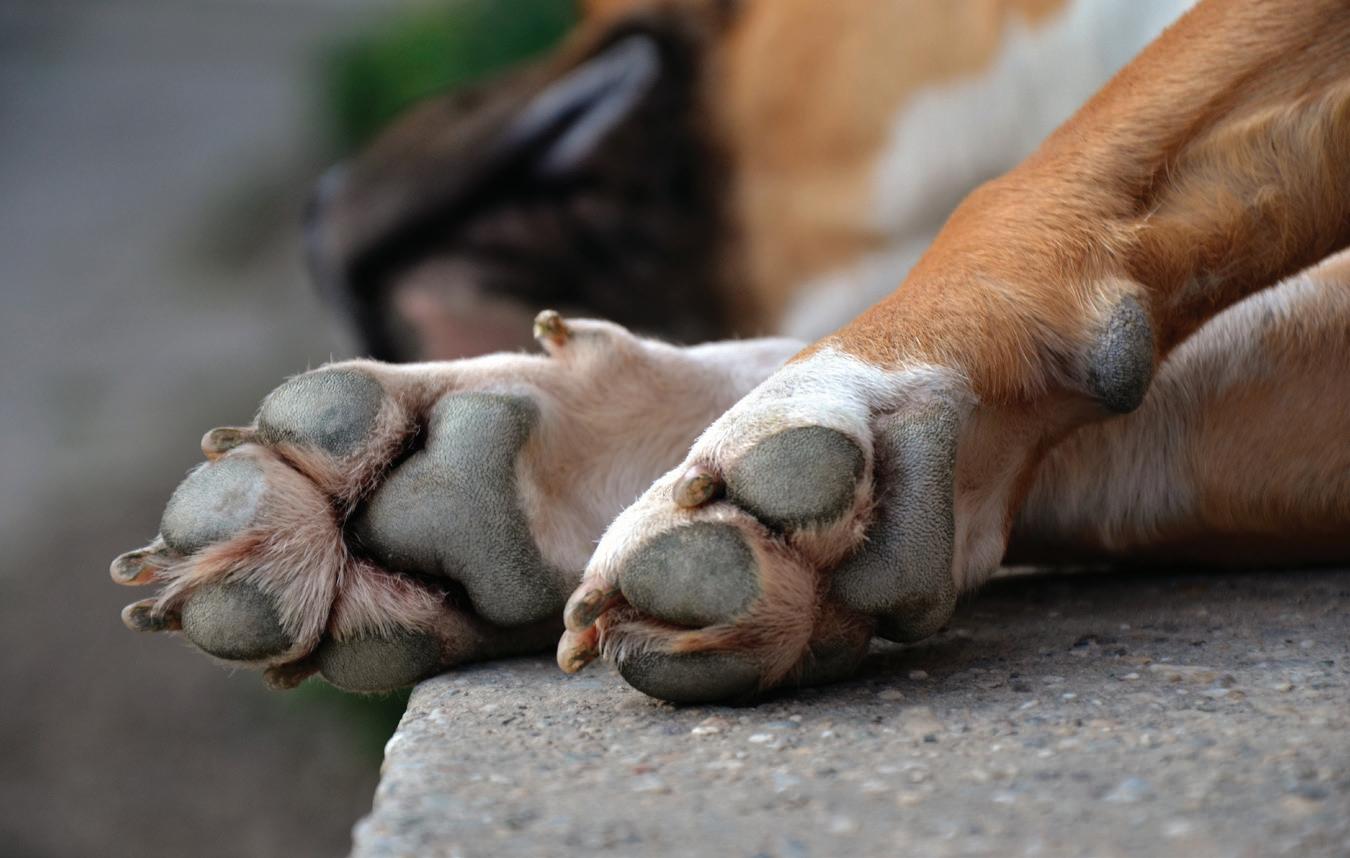
4 minute read
Paw Care
by Brandon Phillips
Unfortunately, dogs’ paws are often overlooked in general health care. In actuality, their continued care is vital to the dog's overall health. Dogs with paw pain or irritation may not be inclined to exercise as much, leading to joint issues, obesity, excess nervous energy, and other concerns. Nail care is essential. Your dog’s nails should sit just above the ground when your dog is standing on all fours. The nails are too long if you hear a clicking sound when your dog walks on hard surfaces. Nails that are long can cause undue stress on the tiny paw joints and, over time, can lead to joint damage. As the nail grows, so does the blood supply to the toes and nail called the”quick.” You want to be very careful not to cut the quick when trimming your dog’s nails to avoid pain and bleeding. The quick is easily seen, within the nail, if your dog has white nails, it appears as a thin pink line. However, it can be tough to determine the location of dark nails. Trimming your dog’s nails regularly will cause the quick to recede into the nail so you can cut them shorter each time. Maintenance here is key. For many dogs, nail trimming is a multi-person job. Grooming professionals often offer “walk-in” nail trimming for your convenience, and they have all kinds of tricks to make trimming a simple experience for your dog. Paw licking can be referred to as a “self-propagating cycle.” If your dog licks his paws because of an allergy or irritation, and that licking causes further irritation, which causes more licking...can lead to infected paws. While it’s best to determine the source of the irritation, it can often be difficult. While you work on the issue, protecting the paws from further damage is important. Children’s socks are often an excellent idea, and if your dog is a whiz at removing them, adding a layer of vet wrap (available at your pet store) will often create too much of a challenge for your dog to remove them. Socks also offer the opportunity to apply an oil or paw balm to the pads to help ease any irritation and aid in healing. The socks will help keep your dog from slipping and allow the dog's body heat to facilitate absorption. If you still cannot keep your dog from licking their paws, an e-collar is another option. Remember, infected paws will require a trip to your vet. Other sources of paw irritation include walking on hot pavement or being exposed to salt or chemical deicers. These irritants can cause your dog’s paws to become raw, chapped, and cracked. If your dog is exposed to these or similar irritants, you will want to wash and dry their paws when they return to the house or use paw wax to offer a layer of protection for the pads. While you may opt for pet-friendly deicers, never assume that your neighbor does. Paw waxes also wear off depending on the length of your walk and can track dirt back into the house, so we recommend paw washing overall. Some dogs suffer from seasonal allergies, and all the paw washing and balms in the world won’t stop the paw licking. In these cases, your veterinarian can help you determine your dog's best options.
It’s most likely you wear shoes when walking your dog, which may mean you are not mindful of the terrain. Hot pavement can burn your dog’s paws, if you can’t walk on it barefoot neither can they.
Sharp rocks, sea shells, bush spurs, or broken glass are all hazards to your dog's paws. Beware of what they are walking on, and if you’re often on rocky terrain, consider boots for your dog. While you may think they look silly, they are a functional tool to protect paws, particularly if your dog is your hiking partner. Quality boots are not a frivolous purchase, and they are also not cheap. However, they are very cost-effective compared to an injury. Boots often work well for small dogs that are quickly chilled by cold pavements, allowing your walks to last longer in the winter months. After, and periodically during long walks, check your dog’s paws for potential irritants or foreign objects. Handle your dog's paws often, particularly during puppyhood. If they are comfortable with the concept, nail care and addressing any paw issues that may arise will be much easier.








